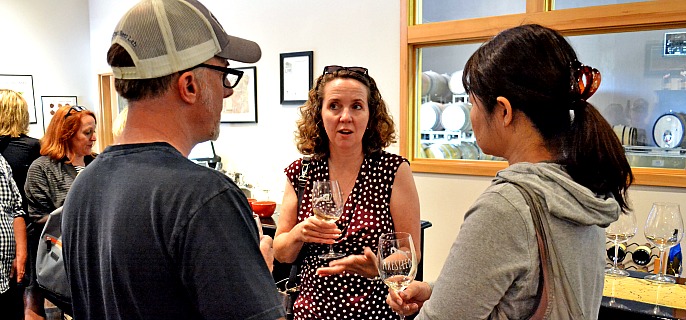
PHOTO COURTESY OF ODA
The Agricultural Development and Marketing Program of the Oregon Department of Agriculture has a goal of making sure everyone connected to the state’s ag industry is aware that of all the ways ODA’s trade managers can help.
With that in mind, the program has assigned its trade managers to geographic regions across the state as key contacts who can help Oregon’s producers, processors, packers, and shippers.
“We are putting forth a concerted effort into going out and engaging everyone within Oregon agriculture to make sure they know the portfolio of products we have available and the ways we can offer support,” says ODA Marketing Director Terry Fasel. “If we can’t help them with our programs, the next step is to connect them with someone who can, even if it’s a different state agency.”
In essence, ODA trade managers have established themselves as key points of contact in all regions of the state. In addition to their other responsibilities– which, for some, includes occasional travel to international markets– trade managers are now taking frequent trips to their assigned areas of the state and become aware of each region’s unique challenges:
· Theresa Yoshioka (pictured)– Central Oregon and Southeast Oregon
· Erick Garman– Portland Metro
· Amy Gilroy– Southern Oregon (Farm to School Program Manager)
· Sue Davis– Mid-Columbia and Columbia Plateau
· Yelena Nowak– Oregon Coast
· Gary Neuschwander– Willamette Valley
· Terry Fasel– Northeast Oregon (Marketing Director)
On a broader scale, ODA’s Agricultural Development and Marketing Program assists Oregon producers and processors in their efforts to successfully sell and ship products to local, national, and international markets. Trade managers work to promote and create demand for Oregon agricultural products. The program reaches rural and urban areas alike to create jobs and sustainable opportunities for the state’s multi-billion dollar agricultural sector. The industry has been greatly helped by the efforts of ODA’s trade managers who ultimately work to bring buyer and seller together.
In the past, ODA has helped provide direct buyer-seller connections for those interested in the export market, relying on long standing relationships, outreach and education to new buyers, trade missions (both inbound and outbound), technical marketing activities, and targeted trade shows in key markets. That kind of help is still available, but those who use ODA’s services have changing needs.
“Our companies are more vertically integrated now, we don’t have a lot of them anymore that just do export, they want to expand their domestic presence as well,” says Lindsay Eng, director of ODA’s Market Access and Certification programs. “We work with a lot of small, family businesses, both on the processing and the production side. Some still only sell locally or domestically, but as they take that next step, we can help them expand the reach of their product overseas, if that’s what they need.”
ODA is putting more emphasis on providing domestic and local marketing assistance. From conducting small business market development workshops for new entrepreneurs to showcasing local Oregon products at promotional events, the team capitalizes on the consumer’s desire to purchase and enjoy locally grown products.
“Much of the help from our trade managers could still be related to export, but when you really think about the worldwide economy, one of the best economies on the planet is the US domestic economy, which includes our state,” says Fasel. “Up to 40,000 people move into Portland alone every year. That’s like a new city each year. When you look at providing food and agricultural products for that group, it requires a lot of production and distribution from within Oregon. While we are always going to be export-minded, we need to take a good look at finding that sweet spot of Oregon food production and manufacturing to figure out where the best markets are for Oregon agriculture.”









